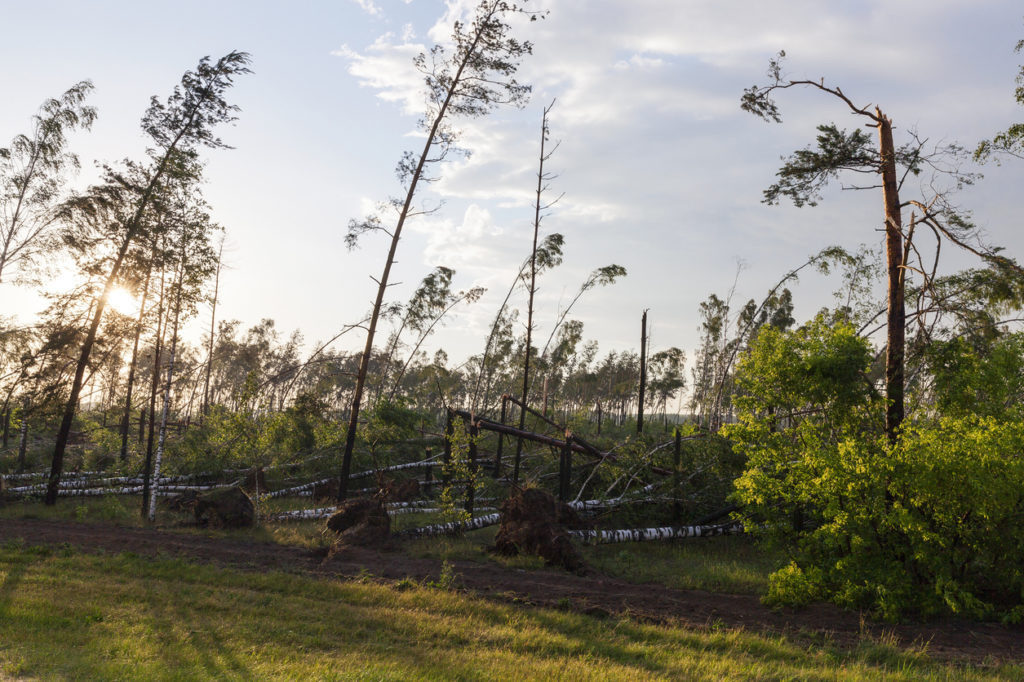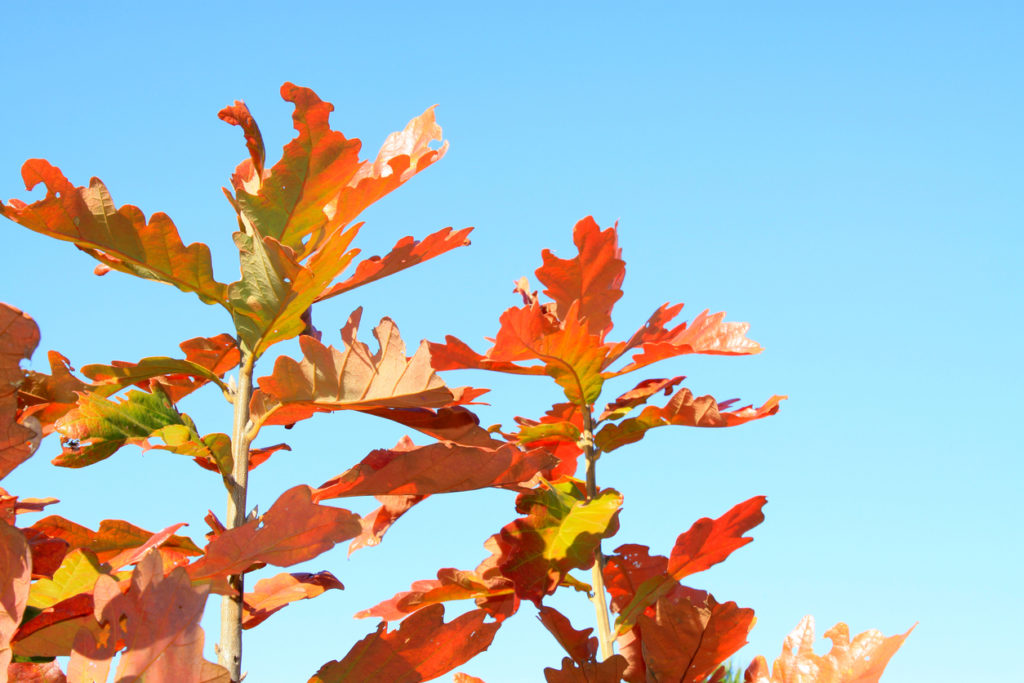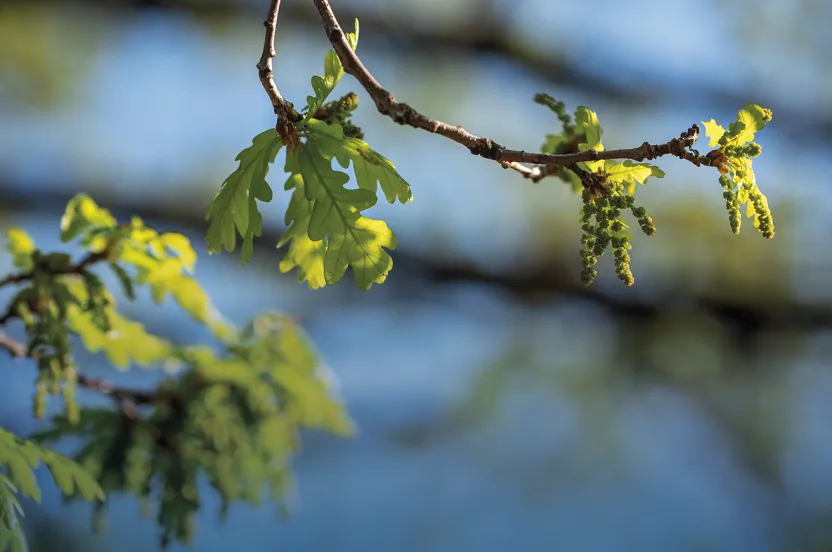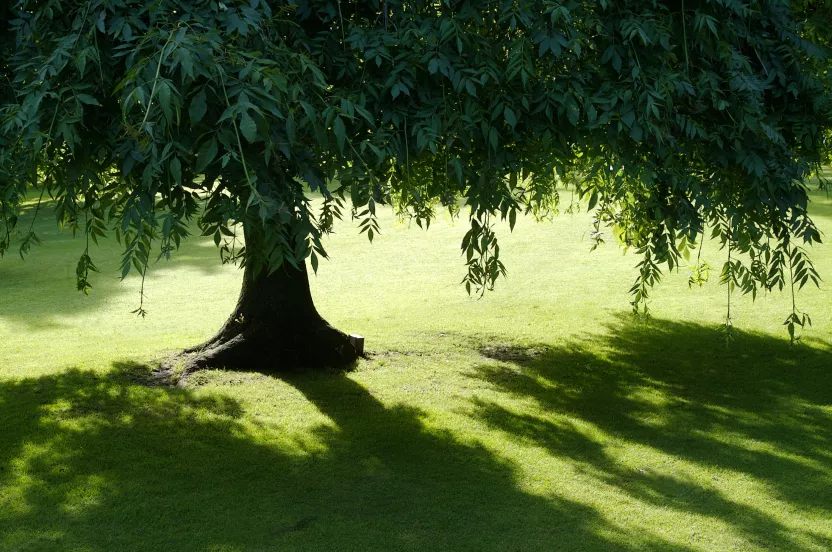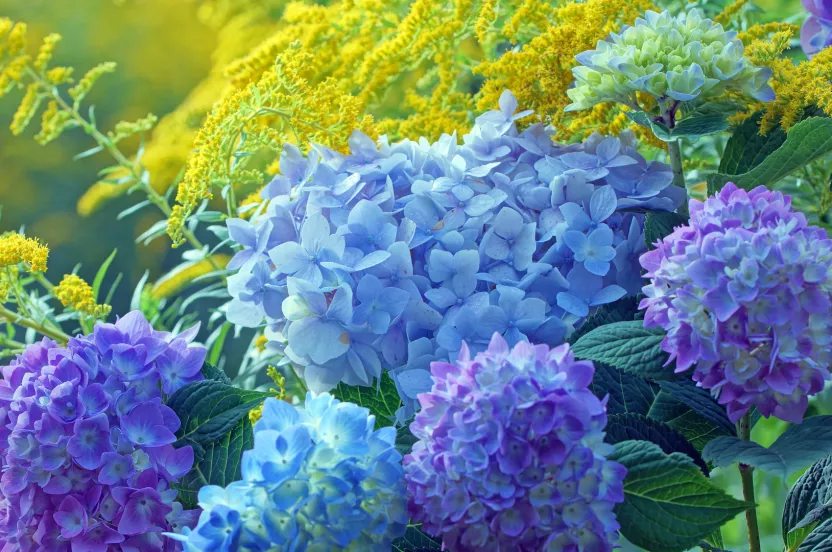Now live: The 2025 Canopy Report. Learn how Americans see trees. GET THE REPORT
Guest post by John Lang of Friendly Tree.
Believe it or not, trees get stressed, too.
While trees in forests typically live for a hundred years or more, trees in cities and towns usually only survive for a few decades. This is because various stressors in the urban landscape take their toll on tree health. Let’s explore some of these factors and how they can be managed.
What Causes Tree Stress?
It’s a common misconception that insects and disease are the main causes for tree death. The human environment actually causes the majority of stress that trees experience – and in fact, even infestation can in many cases be traced back to human activity.
Improper planting is one of the major reasons trees decline in urban environments. Additional contributors to tree stress include watering too much, watering too little, soil compaction, exposure to road salt and pollution, and construction near roots, to name a few. Often it is a combination of several stressors that lead to tree failure.
Symptoms of Stress: What to Look For
The best thing you can do for your trees is prevent stressors to begin with, by ensuring proper planting, watering and pruning.
The next best thing is to inspect your trees regularly for signs they need help. Here are some of the classic signs that your tree is stressed:
Canopy Dieback
Take a look at your tree’s canopy – is foliage sparse, or are there a lot of dead branches? This can often be one of the first indicators your tree is under stress.
Cracks or Splits
Cracks in a tree’s trunk, especially large ones, can indicate decay. Smaller splits will heal on their own, but severe splits usually mean it’s too late for the tree, and it may need to be removed.
Co-Dominant Trunks
A tree that has two trunks which converge in a prominent V shape has most likely been under stress. Consult with an arborist to determine what action should be taken.
Leaning
Some trees gradually lean over time, and it’s no cause for concern. Sudden leaning – usually after a storm – is problematic and may indicate that a tree needs to be removed.
Leaf Drop
If a tree is losing leaves at the wrong time of year (i.e., in the summer or too early in the fall), this means the tree is trying to manage stress by conserving resources. Early leaf drop is usually caused by extreme heat, too much or too little water, or disease.
Early Fall Colors
Similarly, if you are seeing fall colors in your yard and it’s only August, your trees are stressed. Nutrient deficiencies, pest problems and soil compaction are usually the culprits.
Wilting or Brown Leaves
This typically occurs on newly transplanted trees and indicates transplant shock. In most cases this can be remedied by giving them the appropriate amount of water and applying mulch.
Leaf Scorch
If leaves look brown and crispy in the heat of summer, it’s most likely due to leaf scorch. Proper watering and care throughout the year can help prevent this.
Spotted Leaves
Tree fungus is a common tree stressor during a rainy season, and it typically shows itself in brown or spotted leaves. Tree fungus usually requires treatment – consult with your arborist and get a treatment plan.
Mushrooms Near the Base of the Tree
Fungi growing at the base of a tree’s trunk is typically a sign of decay, since mushrooms typically grow on dead or rotting wood. If mushrooms regularly appear under your tree, consult with an arborist.
If you spot any of these signs on your trees, take action sooner rather than later. The earlier you spot and treat a problem, the quicker your tree can bounce back.
About the Author
John Lang is a Certified Arborist and a member of the Friendly Tree team, a family-owned New Jersey tree care service, dedicated to the thoughtful and careful maintenance of your trees and shrubs. Friendly Tree Service has been in business for 26 years and remains passionate about trees and nature. With a highly trained staff that treats every property as their own and state of the art equipment, Friendly Tree is on the cutting edge of the art and science of Arboriculture.

